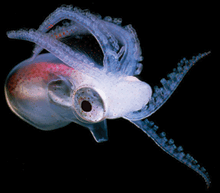“What's in a name?On Sunday, the world awoke to fears of a swine influenza outbreak with its epicenter in Mexico but apparently rapidly spreading. How remarkably topical my limited reading was...
Haemophilus influenzae is widespread in its distribution among the human population. It was first isolated by Pfeiffer during the influenza pandemic of 1890. It was mistakenly thought to be the cause of the disease influenza, and it was named accordingly. Probably, H. influenzae was an important secondary invader to the influenza virus in the 1890 pandemic, as it has been during many subsequent influenza epidemics. In pigs, a synergistic association between swine influenza virus and Haemophilus suis is necessary for swine influenza. Similar situations between human influenza virus and H. influenzae have been observed in chick embryos and infant rats.”
While doing a failed search for a reference to the above bolded statement, I found a series of articles arguing rather strongly that the 1918/1919 influenza pandemic was powerfully augmented by bacterial infections, either secondarily or synergistically.
The simplest argument made was simply that, while the influenza outbreak was massive and global, only a tiny fraction of individuals actually became seriously ill from infection by the influenza virus, while the vast majority of cases were really quite mild. Thus something else had to be going on. More direct evidence for a bacterial role came from failures to recapitulate strong disease in ferrets (and people) without using both filterable and unfilterable portions of infected blood.
In terms of the current fears over swine influenza, it is notable that the sequence of viral isolates from different locations has been (nearly) identical, but the prognosis of different infected individuals has been quite different in various locales. I’m still working my way through these “medico-historical” papers, but here’s my starting references:
Foley (2009)
Brundage and Shanks (2008)
Morens et al. (2008)
Why is this of interest for our research in the Redfield Lab? Naturally, with the coming rounds of grant writing we’ll be doing, it is of interest to make our research relevant to public health. Similar to how the influenza virus can undergo “antigenic shift” to rapidly alter its genotype* (as compared to antigenic drift), so too can the “secondary” invader Haemophillus undergo “shifts” via natural competence and transformation.
Thus the role of bacteria like Haemophillus may be of paramount important in understanding the pathogenisis of influenza, which, as pointed out by Foley (2009): “Since the discovery of the influenza virus in 1929, ‘influenza’ has been tautologically defined as the disease caused by this virus.” Whereas, as quoted in Morens et al (2008):
“If grippe condemns, the secondary infections execute.”
–Louis Cruveilhier 1919* Shift occurs by co-infection of a cell by two viral genotypes and the reassortment of the genetic material by recombination into new viral particles. This is facilitated in influenza virus, since its genome is composed of multiple nucleic acids.

No comments:
Post a Comment